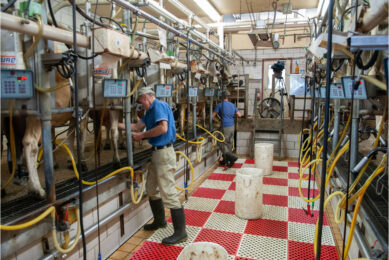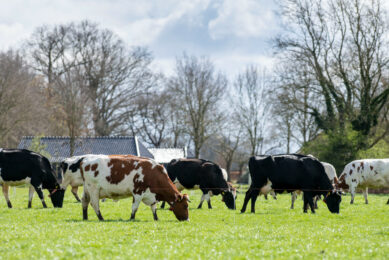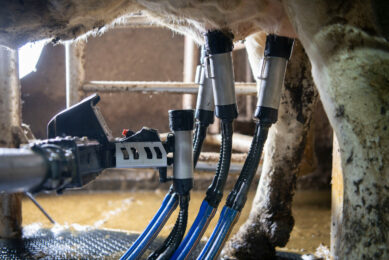Use of automation on bigger farms

Global Dairy Farmers just had our regular congress again. And this time it was held in Thailand and Vietnam. Besides visiting our colleagues, we discussed different interest topics, such as labour management and automation on bigger farms. When we talk about automation in the dairy sector, we often mention precision farming. But what does this entail?
Regarding land production, precision farming starts already with roughage production. Patch wise fertilising of our fields gives possibilities of increasing yields with 10%. But GPS also comes with labour saving and lower use of gasoline, as tractor hours are reduced. The latest developments are focusing on crop yield measurements by NIR analytics on the mower and loading cells on the loader wagon and chopper. I am convinced that at least between 10 and 20% better results can be gained by adopting better land management. For milk production, automation means milk robots, automatic feeding systems, heat detection and tools to measure rumination and milk quality.
When is the right time to automate your dairy farm?
I believe in these innovations, but their implementation needs to be done carefully and when is the right time to start automating your farm and what are the limits? Farms with less than 180 cows can profit from milk robots and automatic feeding systems, but with bigger herds, new critical factors arise, such as costs, availability of labour and skilled workers. It is difficult to calculate advantages on the cost side, because of the number/size of the necessary automated systems. You have to invest more and maintenance costs are not low either. The only way to be profitable will be the use of all possible excellent management tools in combination with high skilled labour and strong coaching of the manufacturer.
On our own farm, we are currently building a new double 28 side by side swing over milking parlour. Mainly because of the costs and availability of enough labour. We have to increase our turnover and our aim is to milk 350 cows with 3.5 fte (1 fte = 1 full time employee). And because all our land work (growing feed) is done for 80% by good contractors, we have enough time to milk the cows ourselves (including the next generation). Furthermore, our feed system is that simple (a partly mixed (PMR), summer feeding system), that we simply cannot earn money with an automated feeding system. A contractor is mixing the half year stock of PMR twice a year in 36 hours. The only investment from our side is the silage cutter on our small loader.
Finding the right automation balance on you dairy farm
My message is that every farm has its own conditions for having a balanced way of managing some level of automation. For me the critical factors are: availability of suitable skilled workers, the level of labour prices, competition with other sectors (the dairy sector has to be attractive for the next generation), service and possibilities for management support of the manufacturers and lastly; the possible margins per kg of milk. Automation is not a guarantee for more profits on our bigger farms. All the other circumstances have to be optimal too, before you can profit from it.
Join 13,000+ subscribers
Subscribe to our newsletter to stay updated about all the need-to-know content in the dairy sector, two times a week.










